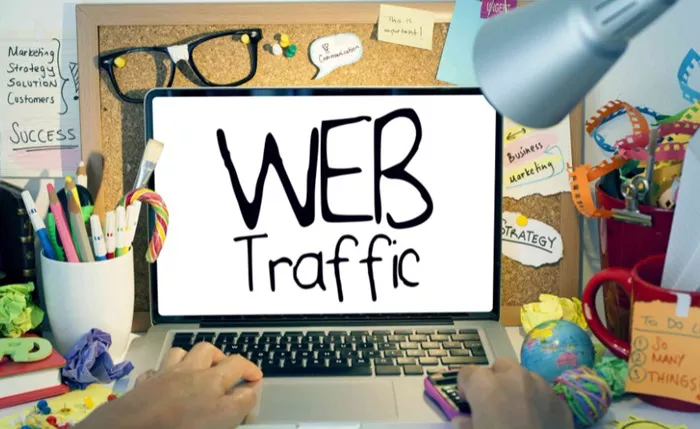Blogging has become a crucial tool for sharing information, promoting businesses, and connecting with audiences. However, one term often comes up when discussing a blog’s success: traffic. But what exactly is traffic in blogging, and why is it so important? This article provides a detailed explanation of blogging traffic, its types, and strategies to increase it effectively.
Understanding Blogging Traffic
In simple terms, traffic in blogging refers to the number of visitors that access your blog. It’s a measure of how many people are reading, interacting with, or engaging with the content you publish. Traffic serves as the foundation for achieving various goals, whether it’s building brand awareness, generating income, or establishing authority in a particular niche.
Why Traffic Matters in Blogging
Traffic is critical for several reasons:
Monetization: High traffic often translates to better earning opportunities, whether through advertisements, sponsored posts, or affiliate marketing.
Visibility: More visitors increase your blog’s visibility and help it rank higher in search engines.
Engagement: Increased traffic leads to higher engagement, providing valuable feedback and insights into your audience’s preferences.
Growth: Traffic helps expand your audience base and establish your blog as a reputable source of information.
Types of Blog Traffic
Blog traffic can be categorized into various types, depending on its source and behavior. Understanding these types is essential for creating an effective traffic-generation strategy.
Organic Traffic: This refers to visitors who find your blog through search engines like Google or Bing. Organic traffic is highly valuable because it often represents users actively searching for information you provide.
Direct Traffic: Direct traffic consists of visitors who access your blog by typing the URL directly into their browser or using bookmarks. This type of traffic often indicates strong brand recognition and loyalty.
Referral Traffic: Referral traffic comes from other websites or blogs that link to your content. Collaborations, guest posts, and backlinks are common sources of referral traffic.
Social Media Traffic: Social media platforms like Facebook, Instagram, Twitter, and LinkedIn drive traffic to your blog when users click on links you share.
Paid Traffic: Paid traffic comes from advertisements such as pay-per-click (PPC) campaigns, social media ads, or display ads.
Email Traffic: Email marketing campaigns that include links to your blog can bring in visitors categorized as email traffic.
How to Measure Blog Traffic
To optimize your blog, it’s important to track and analyze traffic metrics. Common tools for measuring traffic include:
- Google Analytics: This free tool provides detailed insights into your audience, traffic sources, and user behavior.
- Webmaster Tools: Platforms like Google Search Console offer information about search engine performance and organic traffic.
- Social Media Insights: Analytics provided by social media platforms help measure traffic generated from these channels.
Key metrics to track include:
- Pageviews: The total number of pages viewed by visitors.
- Unique Visitors: The count of individual users visiting your blog.
- Bounce Rate: The percentage of visitors who leave without interacting further.
- Average Time on Page: The amount of time visitors spend on each page.
- Conversion Rate: The percentage of visitors who complete a specific action, such as subscribing or making a purchase.
Strategies to Increase Blog Traffic
Generating traffic requires a combination of strategies tailored to your audience and niche. Here are effective methods to boost your blog’s traffic:
Publish High-Quality Content: Quality content is the cornerstone of a successful blog. Ensure your articles are informative, engaging, and relevant to your audience’s needs. Use compelling headlines to grab attention and structure your content with clear headings and subheadings.
Optimize for SEO: Search engine optimization (SEO) helps improve your blog’s visibility on search engines. Key practices include:
Using relevant keywords in titles, headings, and body text.
Writing meta descriptions that entice clicks.
Adding alt text to images.
Improving site speed and mobile responsiveness.
Leverage Social Media: Share your blog posts on social media platforms to reach a broader audience. Use visually appealing images, videos, and hashtags to increase engagement. Participating in discussions and joining relevant groups can also drive traffic to your blog.
Build an Email List: Email marketing is a powerful way to attract repeat visitors. Encourage readers to subscribe to your newsletter and send regular updates with links to your latest posts.
Collaborate with Other Bloggers: Guest posting on other blogs, collaborating on projects, or hosting webinars can help you tap into new audiences and gain referral traffic.
Utilize Paid Advertising: If your budget allows, invest in paid advertising campaigns to boost visibility. Platforms like Google Ads and Facebook Ads allow you to target specific demographics and interests.
Engage with Your Audience: Responding to comments, hosting Q&A sessions, and encouraging discussions help build a loyal community around your blog. Engaged audiences are more likely to share your content, increasing traffic.
Update Old Content: Revise and update older blog posts to ensure they remain relevant and valuable. This practice can also improve your blog’s SEO performance.
Challenges in Driving Blog Traffic
While generating traffic is crucial, it comes with its own set of challenges:
- High Competition: The sheer volume of blogs competing for attention makes it difficult to stand out.
- Algorithm Changes: Search engine and social media algorithm updates can significantly impact traffic.
- Content Saturation: An overload of similar content can make it hard to capture readers’ interest.
- Time and Resources: Building and maintaining traffic takes consistent effort and investment.
Conclusion
Traffic is the lifeblood of any blog, serving as a key indicator of its success and influence. Understanding the different types of traffic and employing diverse strategies can help you attract and retain visitors, ensuring your blog continues to thrive. While challenges are inevitable, persistence and adaptability are crucial for overcoming them. With consistent effort and a focus on providing value to your audience, you can steadily grow your blog’s traffic and achieve your goals.
Related Topics

